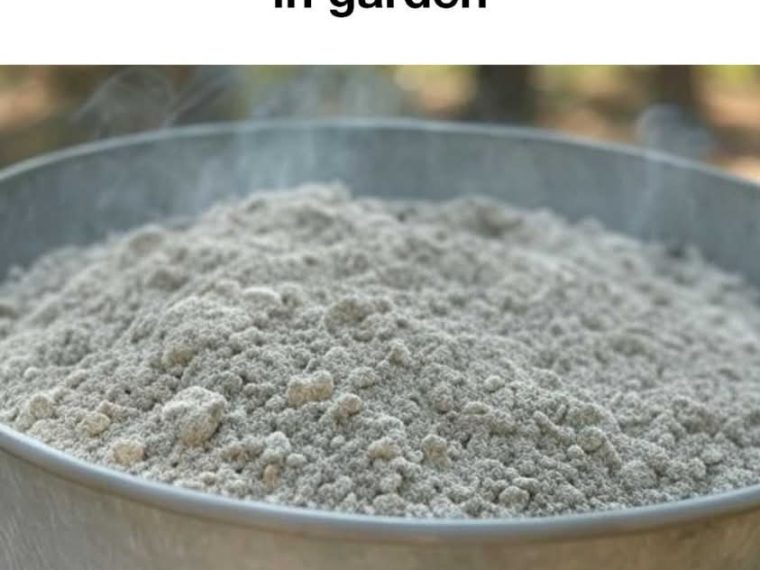Wood ash, a byproduct of burning wood, is often overlooked as a valuable resource for gardening. Many gardeners are unaware of its potential benefits and how to use it effectively. When used correctly, wood ash can enhance soil quality and promote plant health. However, improper use can lead to soil imbalances and harm plants. This article will guide you through the correct use of wood ash in your garden, ensuring you maximize its benefits while avoiding common pitfalls.
Understanding the Composition of Wood Ash
Wood ash is primarily composed of calcium carbonate, making it a natural liming agent. It also contains potassium, phosphorus, and trace amounts of other nutrients like magnesium and aluminum. The exact composition can vary depending on the type of wood burned. Hardwoods generally produce more nutrient-rich ash compared to softwoods. Understanding these components is crucial for determining how wood ash can benefit your garden and which plants will thrive with its application.
Benefits of Using Wood Ash in the Garden
Using wood ash in the garden can offer several benefits. It acts as a liming agent, raising soil pH and reducing acidity, which is beneficial for plants that prefer neutral to slightly alkaline conditions. The potassium content in wood ash supports root development and improves overall plant health. Additionally, wood ash can enhance soil structure, improve drainage, and increase the availability of other nutrients. Its pest-deterring properties also make it a natural alternative to chemical pesticides.
Common Mistakes When Using Wood Ash
One of the most common mistakes gardeners make is applying too much wood ash, which can lead to an overly alkaline soil environment. This can harm plants that prefer acidic conditions and disrupt nutrient availability. Another mistake is applying wood ash without testing soil pH first, which can result in imbalanced soil chemistry. Additionally, using ash from treated or painted wood can introduce harmful chemicals into the soil. Understanding these pitfalls is essential for using wood ash effectively.
How to Properly Use Wood Ash in the Garden
To use wood ash properly, it’s important to follow a few key guidelines. Start by testing your soil pH to determine if your garden will benefit from wood ash application. Apply wood ash sparingly, as over-application can lead to soil imbalances. Use it as a pest deterrent by sprinkling it around the base of plants. Incorporate it into your compost to enhance nutrient content. Avoid using wood ash on acid-loving plants, and store it properly to maintain its effectiveness.
1. Test Your Soil pH Before Application
Before applying wood ash, conduct a soil pH test to determine its current acidity level. This will help you decide if wood ash is appropriate for your garden. If your soil is already alkaline, adding wood ash could exacerbate the issue. Soil testing kits are available at garden centers and provide a quick and easy way to assess your soil’s pH.
2. Apply Wood Ash Sparingly
When applying wood ash, less is more. A thin layer, approximately 10 to 15 pounds per 1,000 square feet, is usually sufficient. Over-application can lead to an alkaline soil environment, which can inhibit nutrient uptake and harm plants. Spread the ash evenly and incorporate it into the soil to avoid concentrated areas of high pH.
3. Use Wood Ash to Deter Pests
Wood ash can be an effective natural pest deterrent. Sprinkle a thin layer around the base of plants to deter slugs and snails. The ash irritates their soft bodies, discouraging them from crossing it. Reapply after rain or watering, as moisture reduces its effectiveness.
4. Incorporate Wood Ash into Compost
Adding wood ash to your compost pile can enhance its nutrient content. Mix it in with other organic materials to balance the carbon-to-nitrogen ratio. This helps speed up the decomposition process and results in nutrient-rich compost that can be used to enrich garden soil.
5. Avoid Using Wood Ash on Acid-Loving Plants
Plants like blueberries, rhododendrons, and azaleas thrive in acidic soil conditions. Applying wood ash to these plants can raise soil pH and harm their growth. Be mindful of the specific pH preferences of your plants before applying wood ash.
6. Store Wood Ash Properly
To maintain the effectiveness of wood ash, store it in a dry, covered container. Exposure to moisture can leach out valuable nutrients and reduce its liming ability. Ensure the storage area is secure to prevent accidental spills or contamination.
Conclusion: Maximizing the Benefits of Wood Ash
Wood ash can be a valuable addition to your gardening toolkit when used correctly. By understanding its composition and benefits, testing soil pH, and applying it sparingly, you can enhance soil quality and promote plant health. Avoid common mistakes and tailor your use of wood ash to suit the specific needs of your garden. With proper application, wood ash can help you cultivate a thriving, healthy garden.





